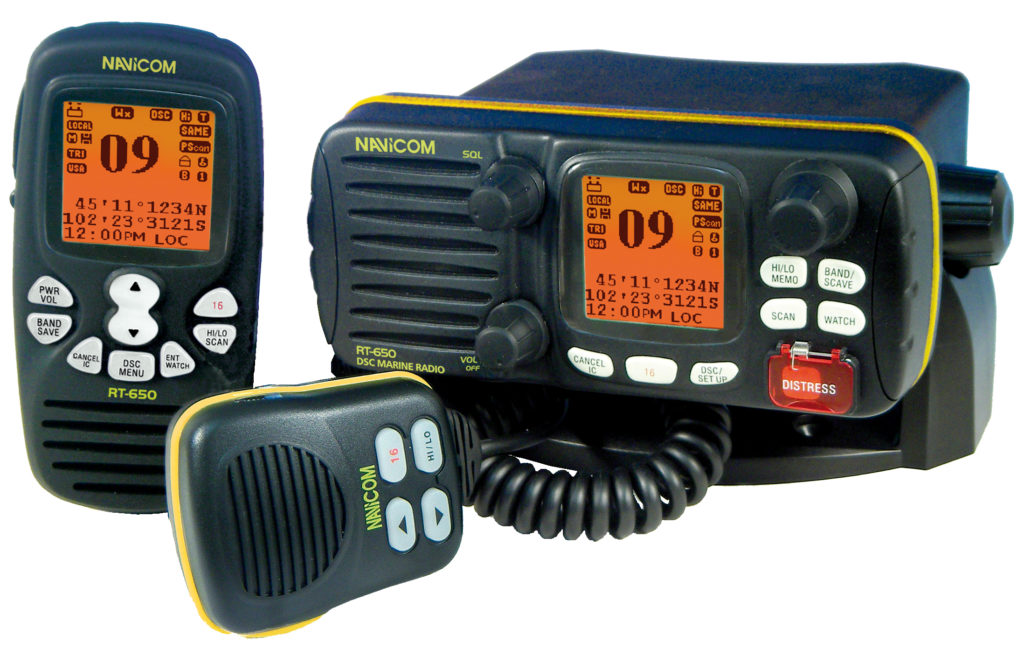FICHES INFO > DIRIGER, ENCADRER
Moyen de communication (VHF, …)

Quelle est la réglementation à propos des moyens de communication pour les établissements d’APS qui organisent la plongée ?
La réglementation applicable provient du code du sport et du droit maritime, qui varie selon le statut du navire. Les deux sources réglementaires doivent être respectées, les obligations se cumulent.
CODE DU SPORT
L’article R322-4 du code du sport, à portée générale pour tous les établissements d’APS, indique qu’un « moyen de communication permettant d’alerter rapidement les services de secours » doit être disponible.
L’article A322-78-1 du code du sport, rend obligatoire « un moyen de communication permettant de prévenir les secours ». Rien n’est précisé quant à la nature de ce moyen de communication (téléphone fixe, mobile, …) hormis « lorsque la plongée se déroule en mer au départ d’une embarcation support de plongée », auquel cas une VHF est obligatoire. Rien n’est précisé concernant la nature de cette VHF. Il faut en conclure qu’elle doit être adaptée au lieu de plongée pour permettre une communication efficace (VHF portable, fixe, …).
DROIT MARITIME
Les obligations diffèrent selon le statut du navire.
DIVISION 240 (Plaisance)
Ce statut est le statut de droit pour toutes les embarcations de plongée de moins de 24 m, qu’elles soient exploitées à titre associatif ou commercial.
Du côté de la sécurité des navires de plaisance (Division 240, navire de plaisance de formation pour les navires de plongée), l’annexe 240-A.1 rend une VHF fixe obligatoire à partir de la navigation semi-hauturière (de 6 MN à moins de 60 MN d’un abri) et demande d’y ajouter une VHF portative pour la navigation hauturière (à partir de 60 MN d’un abri).
DIVISION 241 (Navire de plaisance <= à 24 m à utilisation commerciale – NUC).
- Une VHF-ASN. (art. 241-2.02)
- Toutefois, les navires de longueur de coque inférieure à 12 m exploités exclusivement à la journée peuvent n’embarquer qu’un émetteur-récepteur VHF, y compris portatif, dans la mesure où les communications sont assurées quelle que soit la position géographique du navire sur le plan d’eau désigné. (art. 241-2.02)
DIVISION 219 (cas particulier)
Si vous relevez de cette division, vous devez vérifier, avec les autorités compétentes, le matériel radioélectrique exigé.
Il dépend de votre zone de navigation, du territoire concerné (métropole ou départements, territoires et collectivités d’outre-mer) et de votre catégorie d’armement (4e, 5e).
EN RESUME
Dans tous les cas (piscine, carrière, lac, rivière, mer départ du bord ou embarcation, …)
Un moyen de communication permettant d’alerter rapidement les services de secours doit être disponible.
En mer, à bord d’une embarcation relevant de la division 240 (plaisance <= 24 m)
Navigation à 6 MN au plus d’un abri : VHF.
Navigation de 6 MN à moins de 60 MN d’un abri (semi-hauturière) : VHF fixe.
En mer à bord d’une embarcation relevant de la division 241 (NUC <= 24 m)
VHF-ASN
Sauf pour les navires de moins de 12 m exploités exclusivement à la journée qui peuvent n’embarquer qu’une VHF*, y compris portative.
* Notez que la plupart des VHF fixes actuellement en vente sont des VHF-ASN.
Légende :
MN : Mille Nautique (=1 852 m).
© Extrait des livres Plongée Plaisir par Alain Foret aux Editions GAP.
Toute reproduction interdite sur quelque support que ce soit sans accord écrit de l’éditeur et de l’auteur.

